What is a Hair Color Analysis and How Does It Work?

Key Takeaways
Hair colour analysis pairs hair shades with your skin undertone, natural hair level, eye color, and contrast level for a balanced effect. Seasonal palettes and simple color theory guide you toward the flirty shades that highlight your natural beauty.
💫 Discover Your Complete Color Palette
Ready to discover all the colors that make you look radiant? Our comprehensive color analysis will reveal your complete personal palette - perfect for hair, makeup, and wardrobe decisions.
Take Color Analysis Quiz →Determine your undertone with several double checks — the vein test, fabric drape, and jewelry methods — in uniform, natural light. Match hair colour warmth to your undertone for a balanced, glowing result.
Take into account your natural hair level and eye color patterns when choosing shades to maintain dimension and balance. Write down your existing color and make note what colours work with your eyes for clever, replicable selections.
Take a hair colour analysis, work in stages with neutral backgrounds and steady lighting, traditional and digital tools. Cross-verify results from separate approaches, then re-test in different lighting to minimize bias and errors.
Apply your results to construct a functional hair/makeup/wardrobe palette, grouped by season and contrast. Compare your palette with a stylist, bring in swatches and ask for test strands before you commit.
Keep it loose and refresh your palette as your coloring, style or tastes change. Monitor which tones garner compliments and confidence to keep your look pop and real.
Hair colour analysis finds hues that complement your skin tone, eye color, and natural undertone. It charts warm, cool or neutral hues and pairs them with depth ranges from light to dark.
To map out a makeover, it employs such wizardry as vein measurements, drape experiments, and neutral daylight. Most use seasons, some use levels and tonal codes.
We deconstruct the steps, provide quick checks, and display actual shade examples in this guide.
Understand the fundamentals
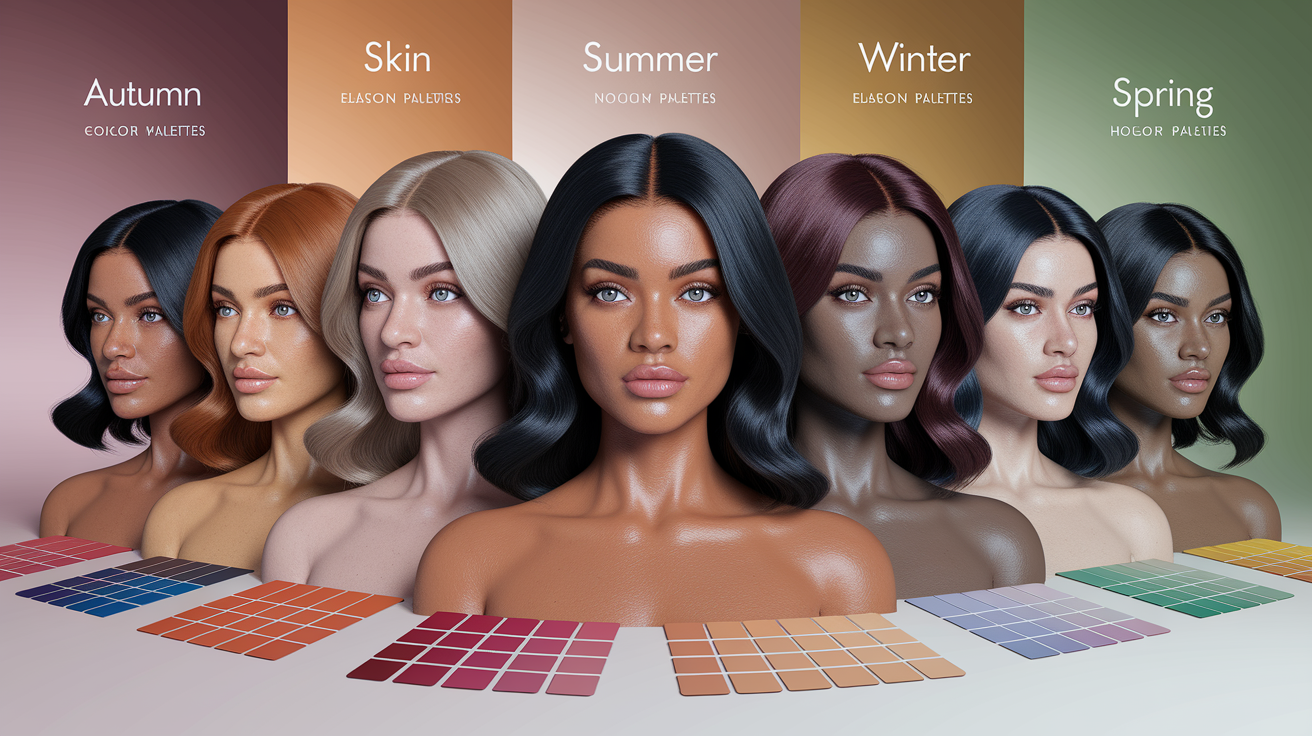
Hair **color analysis** pairs your hair shade with your skin tone, eye color, and general coloring. The aim is harmony: a shade that looks like it belongs to you. Seasonal analysis classifies you as spring, summer, autumn or winter to direct palettes.
Color theory lurks beneath all this work—hue, level, and intensity guide which tones complement, what contrast appears correct, and how a formula will perform on actual hair. It's fundamental for colorists, but it's slow to get right. Months, even years of practice make the theory click.
Skin undertones
Undertones are cool, warm or neutral. Cool skin complexion matches ashy, beige or icy colors. Warm skin adores golden, copper, or honey shades. Neutral usually endures both, but still enjoys soft equilibrium.
You can test undertones by more than one hint. Examine veins at the wrist (bluish or purple lean cool; greenish lean warm). See which jewelry illuminates your face (silver suggests cool, gold suggests warm). Think about sun: quick tan with little burn often means warm; burn first can signal cool.
- Cool: bluish or pink undertone, silver jewelry, burns easily
- Warm: golden or olive undertone, gold jewelry, tans easily
- Neutral: mixed signs, both metals look fine, balanced response
Combine hair and undertone for a glow that's natural, not contrived.
Natural hair level
Natural hair lies on an international scale from 1 (black) to 10 (lightest blonde). Base level determines how dye reads and what warmth emerges upon lift. All natural shades contain eumelanin (black, brown) and pheomelanin (red, yellow), so warmth is always there.
When selecting new shades, respect your natural highlights and lowlights. Ash on super dark hair can sometimes go flat; a soft mocha might maintain the dimension. If lifting more than two levels, control over red, orange and yellow fades, so prep for toning.
Record your existing shade—daylight photos, level and undertone notes—so you can monitor changes and hone selections.
Eye colour patterns
Blue, green, hazel and brown eyes guide color choices. Specks, rings and clarity count. Clean blue generally adores cool ash or icy beige. Warming green pops with copper. Hazel with gold flex can manage caramel. Deep brown can ground sumptuous espresso or gem-tone colors!
Take your eye color into consideration when selecting hair highlights and makeup colors. Snag a strand from the iris—gold, slate or teal—and replay in lowlights or shine. It reads together without over effort.
| Eye color/pattern | Suggested palettes |
|---|---|
| Blue (clear/icy) | ash blonde, cool beige, soft mocha |
| Green (warm/golden) | copper, strawberry, warm brown |
| Hazel (gold/mixed) | caramel, honey, neutral brown |
| Brown (deep/jewel) | espresso, blue‑black, cool brunette |
Personal contrast
Personal contrast is the contrast between skin, hair and eyes. High contrast (fair skin, dark hair, bright eyes) can wear deep, cool shades or crisp highlights. Medium contrast prefers balanced shades—neutral browns, soft coppers, sandy blondes.
Low contrast (soft skin, soft eyes) is best with gentle shifts and low intensity tones. Determine whether you want to emphasize contrast or diminish it. Select phase, grade, and strength appropriately.
Product type matters too: permanent, demi-permanent, semi-permanent, and temporary each shift color differently. To change color, employ direct formulation—note undertone, degree, and whether the formula lifts or deposits.
If you're lifting more than two stories, anticipate heat to break through and schedule a toner or a cooler victim. Color theory makes these calls educated, not fortuitous.
How to perform a hair colour analysis
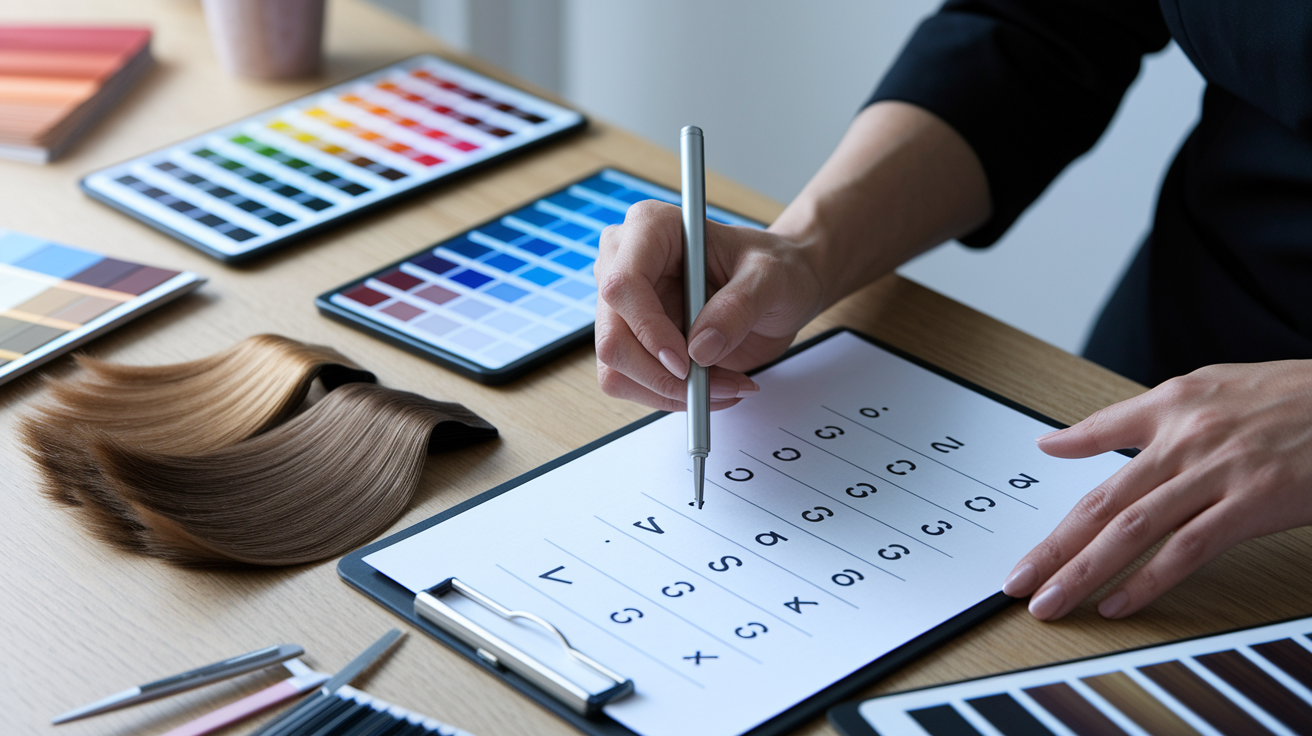
An unambiguous procedure, like using a color analysis kit, eliminates the guesswork and guides you in selecting hues that complement your skin and eye tone, including flattering colors for your personal palette.
1. Stand by a window or use a daylight lamp (5,000–6,500 K). Maintain a solid white or beige background. Put on a white tee or hang a neutral scarf.
2. Keep in mind your natural hair depth, eye clarity and skin undertone.
3. Run quick tests: veins, fabric drape, jewelry. Photograph results on the white background.
4. Test digital tools: virtual try‑ons, color pickers, calibrated screens if possible.
5. Double‑check results. Create a palette with warm/cool direction, perfect depth (light, medium, dark) and best chroma (soft vs bright).
6. Go back on another day and in similar lighting to verify.
1. The vein test
Look at your veins on your wrist in bright indirect daylight. If they read blue or violet, then you probably lean cool. Green or olive undertones warm. A blend can indicate neutral or ambiguous undertones.
Repeat on another day and near another window to eliminate color cast from walls or curtains. If results conflict, label as "unclear".
Consider this to be a single piece of information. Combine vein hints with drape, jewelry and photographs. Most of us sit between warm and cool, so don't lock your selection from veins alone.
2. The fabric drape
Hold color drapes up to your face and hairline. Watch for surface effects: clearer eyes, smoother skin, fewer shadows.
Test four groups: warm autumn (rust, camel, olive), cool winter (true red, cobalt, charcoal), soft summer (dusty rose, pewter, sage), light spring (peach, mint, butter yellow). Notice which set makes skin look vibrant and which saps it.
Highlight the victors. If rust and camel glow while cobalt looks severe, you're probably warm. If charcoal sharpens and camel dulls, you skew cool.
Note precise shades and save pictures. Now this is your reference palette for hair dye swatches and salon conversations!
3. The jewelry method
Hold gold and silver up next to your face in daylight and take a quick selfie. Observe which metal imparts a healthy glow and which appears flat.
If both work, you can sit by neutral. I use this as a quick shade filter, then validate with drape and photos.
4. The neutral background
Shoot all tests on white or beige. Ditch bold tops, lipstick and tinted glasses. A neutral scene allows you to observe actual skin and hair changes.
Use the same light each time to reduce shadows and color shift.
5. The digital tools
Preview depth and tone risk-free with virtual **hair color simulator**s and analysis apps! A color picker or calibrated camera can sample your skin and favorite dye swatches for closer matchings.
Experiment with several, then compare screen to real-life drape notes and daylight selfies before you commit.
The psychology of hair colour
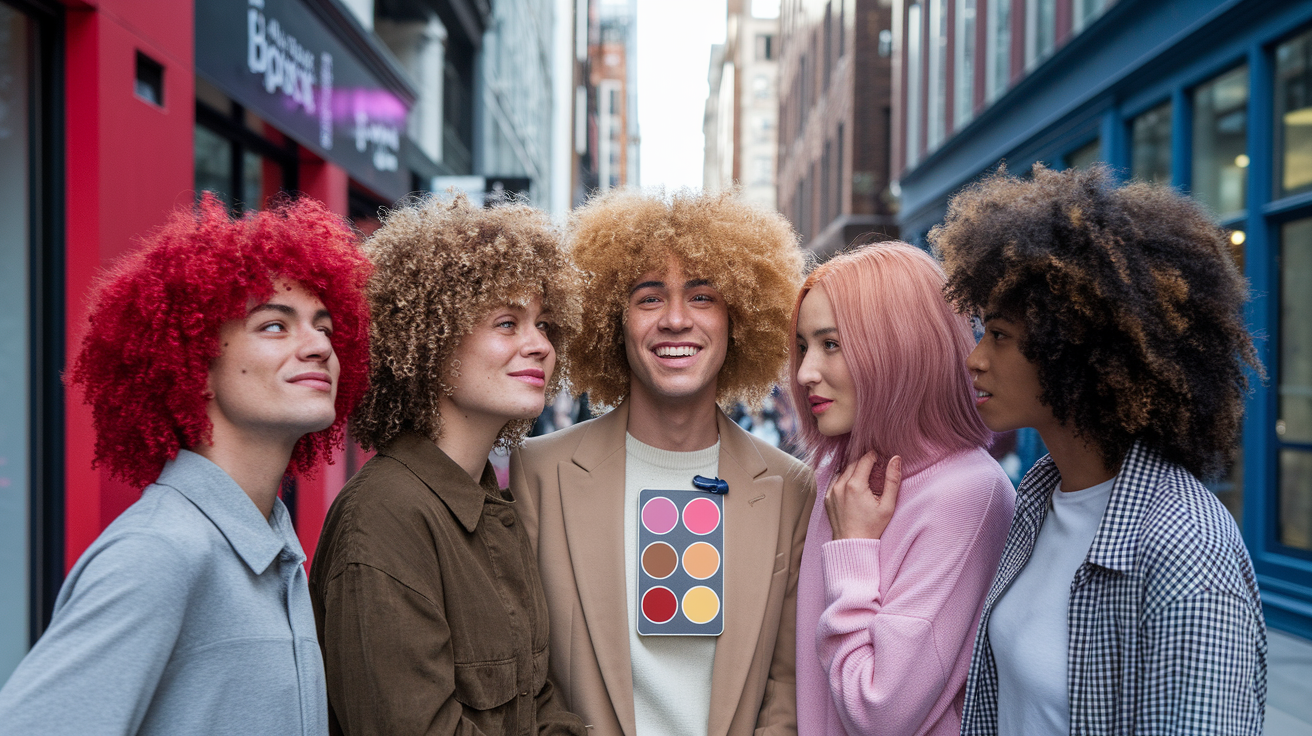
We're more aware than ever that hair color, including options like dark brunette hair or blonde hair, informs our self-perception, affects attitude, and influences initial perceptions, typically prior to a syllable being uttered, showcasing the importance of a color analysis kit.
Colour perception
They see color differently – it shifts in their eyes and with context. Lighting affects warmth and depth, while surroundings can enhance contrast or tone it down. For instance, a caramel brown next to a green wall may appear olive, but beside a red shirt, it looks richer. This variation highlights the importance of using a color analysis kit for accurate assessments.
Personal sight differs as well; some individuals may not perceive notes of coolness. Warm light (like incandescent or sunset) adds gold, making ash tones appear beige, while cool light (such as overcast daylight or LEDs in the 5,000–6,500 K range) reveals blue or green casts that can overshadow copper. Understanding these nuances is crucial for effective seasonal color analysis.
This is important for salon choices and at-home experiments. Proceed cautiously with virtual previews. Screens saturate, camera sensors overexpose reds, and filters conceal undertones. Go back and check a swatch in natural light by a window and then under your indoor light at night. If in doubt, try a patch.
For objectivity, use measured tools like daylight-balanced bulbs and digital colorimeters that assess hue and L_a_b* values. A straightforward white-balance photo against a gray card offers a more accurate baseline for your color type selection.
Cultural signals
Hair colors carry stories that shift by place and time, and understanding this can enhance your personal color analysis experience. Studies show colors trigger perceptions: blondes are often linked with sex appeal and the "dumb blonde" trope, while brunettes are cast as plain or serious. Redheads, tagged as funny or wacky, often face issues of low self-esteem in surveys. Stereotypes persist, even when they miss real people.
Trends are local, regional, and community-based, with the color analysis kit revealing how ashy beige and soft brown reign in East Asia, while vivid jewel hues flourish in youth cultures from Lagos to Seoul. In Latin America, warm caramel accents are favored, showcasing the diverse color schemes across the globe. Red hair's uncommonness—somewhere around 2–3% globally—amplifies the notice and prejudice associated with it.
Red hair's uncommonness—somewhere around 2–3% globally—amplifies the notice and prejudice. Context is everything when selecting daring hues. In conservative fields, neon might come across as insubordinate, in artsy ones it denotes artisan and style.
Hair color psychology balances undertone, contrast, and social environment, ensuring your shade reads as you want it to. The right color type can make a significant difference in how you are perceived, allowing you to express your identity through your hair color choices.
Personal identity
Hair colour is an in-your-face, easily transportable way to declare your identity. It can elevate spirits, signify a fresh beginning, or blur contours when life is acute. Choose a colour that matches your mission and lifestyle.
Rushed a.m.'s love low-maintenance balayage; regular occasions could call for a glam nude; artists may live in seasonal hues. Match undertone to skin and eye color, match upkeep to budget and time. Change can reset our self-image.
A cool brown can inject calm, a copper can ignite play. If biting remarks reverberate ancient clichés—gingers bullied into being freaks, blondes boiled down to boneheads, brunettes banished as boring—identify the prejudice and select what works for you today.
Allow your palette to progress. Refresh when your position, preference, or convenience changes. Small moves count: adjust warmth by half a level, add face-framing light, or try a gloss to test tone without full commit.
Advanced color analysis hair color
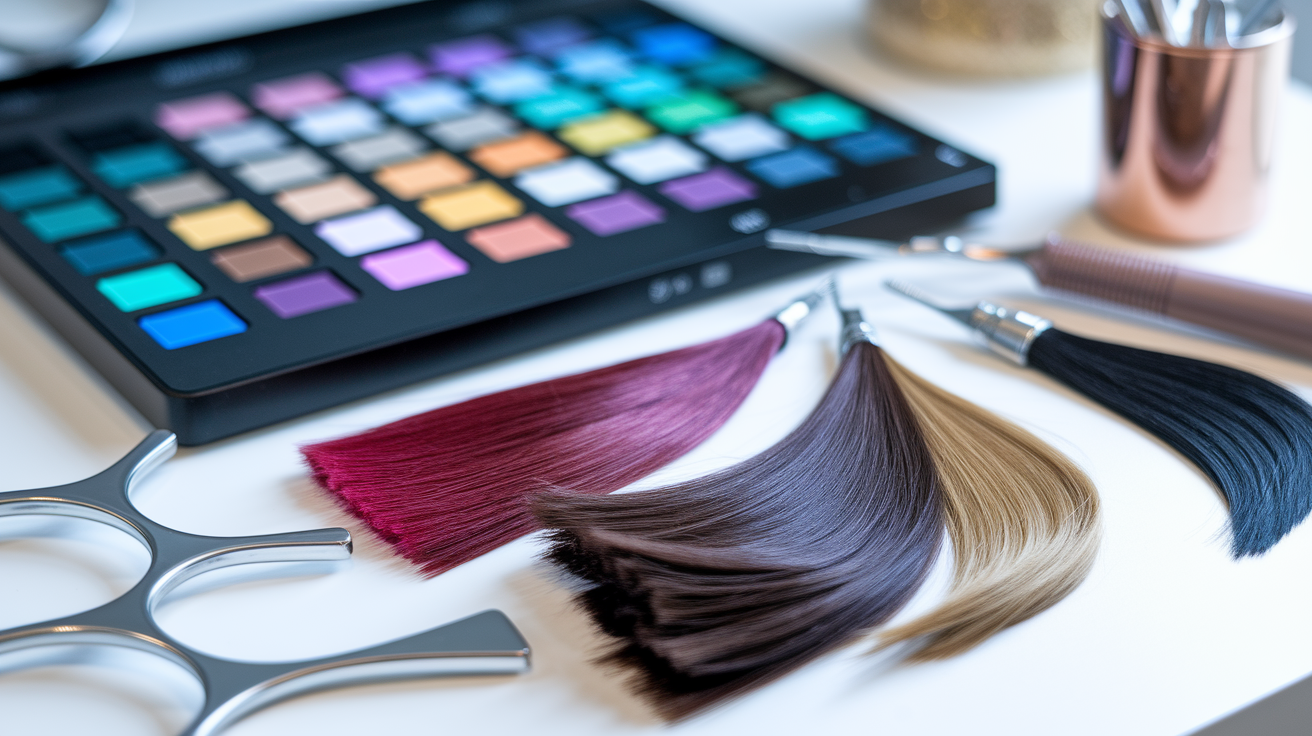
Advanced color analysis, including a color analysis camera, matches hair color to skin tone, eye color, and natural hair color to prevent choosing shades that wash you out. It scans three fundamental color dimensions—value, chroma, and undertone—to construct a precise, personalized palette. When used well, it accelerates tone selection and enhances color longevity for high-end, personalized matches.
Spectrometric methods
Spectrometric analysis measures how hair reflects light across wavelengths, converting that into quantitative color information. It captures value (light to dark), chroma (muted to bright), and undertone biases that the eye can miss under indoor LEDs or searing sun. With this data, a colorist can effectively use a color analysis kit to chart the gap between your current tone and a target tone, then schedule increments that preserve the cuticle and maintain tone.
This path serves those who require precise color shades, such as models swapping shades for a shoot or professionals in front of the camera. Salons and color pros employ handheld spectrometers to capture baselines, test swatches, and check toner fade after 2–4 weeks, locking in formulas that resist brass or ash drift, ensuring the best colors for each individual.
Contrast spectrometric reads with traditional draping and a color type selection page to verify your 'season' and undertone. If the device indicates neutral-cool and the deck concurs, confidently choose shades like ash brown or mushroom blonde. If there's a discrepancy, consider lightening or retesting for optimal results.
Machine learning
We use advanced color analysis hair color. It detects trends, like how warm skin with light eyes tends to wear caramel blonde, copper, honey or gold brown best, while cool skin and blue eyes veer ash or espresso with cold lowlights.
Advanced color analysis hair color apps, for example, use your daylight selfie, read undertone, and suggest palettes complete with swatch numbers and developer strength. Others flag risk for individuals with medium-high hair-skin contrast when lifting multiple levels, stating it may require staged lifts, bond builders, and patient timing.
Use ML tools when you want a quick, data-driven read before a consult. Double check favorites with your natural hair record and how previous dyes faded.
Genetic markers
Genetic testing can suggest natural pigment trajectories—eumelanin vs pheomelanin balance, greying probabilities, and how you might lift or preserve red. That guidance allows you to select hues that appear as if they belong on you, not another person.
DNA results indicating potent warm coloring suggest golden brown, honey or copper that reads natural. It doesn't select a formula, but it cuts guesswork and cuts down on extended correction cycles.
All advanced color analysis hair color services now provide genetics as an add-on, often combined with spectrometry and an ML report.
Common analysis limitations
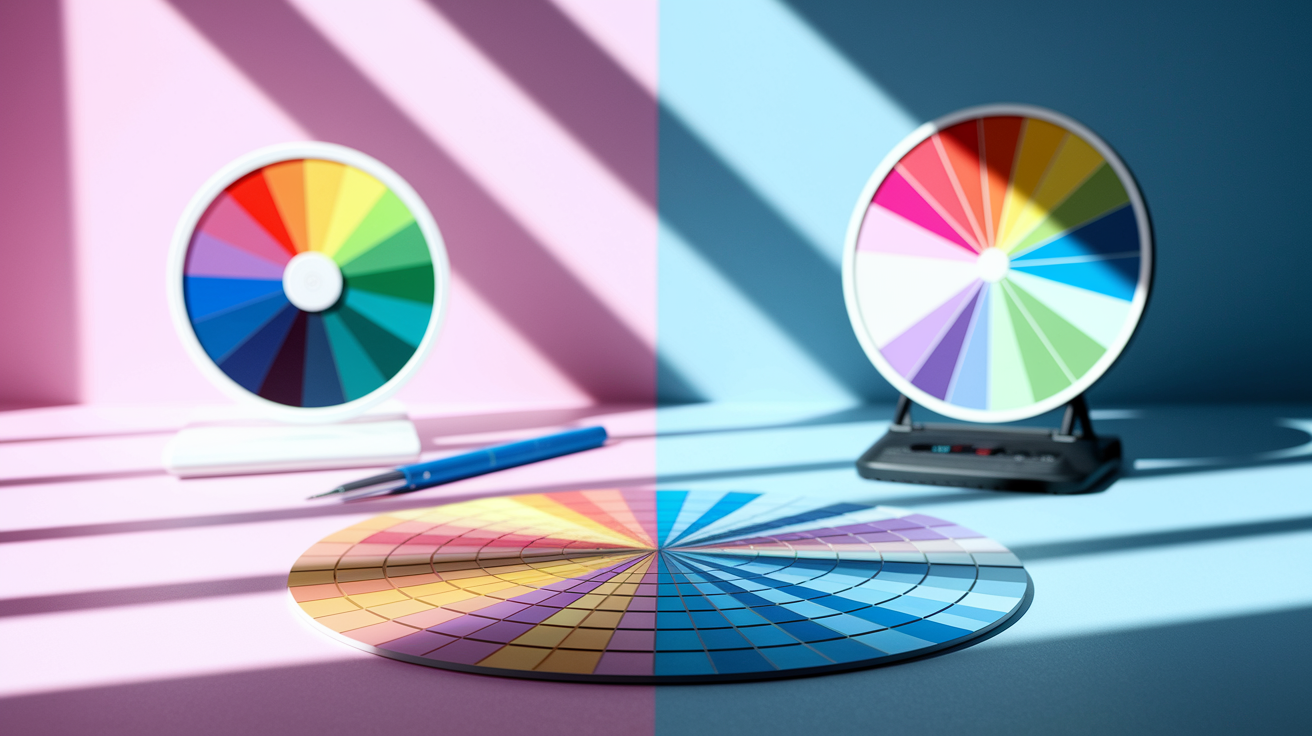
Every hair color analysis system has its limitations. Outcomes move with illumination and prejudice and instruments. Systems vary, from 4 to 16 'seasons,' and plenty of individuals fall in between types. Skin and hair change with the seasons, and makeup, styling, fabric quality, drape and fit all shift how a color comes across.
Seasonal rules can be rigid, disregard lifestyle or workplace requirements, and stifle personality. Cross-check techniques, test in real life, and stay flexible with your palette.
Lighting variables
Light changes color more than you'd expect, especially when considering the impact of different lighting conditions on your color analysis experience. Natural, warm, and cool light can make the same tone appear soft, harsh, or flat. For instance, a neutral brown could flicker red in warm LEDs or ash around cool fluorescents. Harsh sun can blow out highlights and obscure nuance, while overcast shade can mute warmth, making it essential to use a color analysis kit for accurate results.
This variability implies that the 'best' shade at noon may appear all wrong at dusk. To achieve the most reliable color matching, shoot for steady, diffused daylight by a window for the essential analysis. Stand about 1–2 meters from the light, avoid colored walls, and forego bright lip or cheek makeup that could tint the read.
Salon lights are usually hot and intense, which can lead you toward cooler dyes than you actually require. Sunlight can also deceive you into believing a shade is brighter than it truly is, making a personal palette even more crucial.
Before you book color, recheck swatches and photos in varied light: morning shade, indoor office LEDs, and evening at home. If a color works only in one scene, it's a gamble for everyday wear, underscoring the importance of understanding your color types for optimal results.
Subjective interpretation
We don't look with innocent eyes; instead, we engage in a color analysis experience that incorporates flavor, fashion, culture, and attitude into our choices. One may say 'rich auburn', while another might find it 'too orange'. This divide only grows as seasonal color analysis labels begin to read like a playbook.
To ensure a successful color type selection, pull in a pro or a trusted friend with a clear brief: what do you want to project at work, and what feels like you on the weekend? Employ easy-to-use tools like a color analysis camera and gray cards for white balance, neutral capes, and standardized drapes to ground your judgment.
Record test steps and decisions. Remember lighting, makeup, hair finish (air-dried vs. Blowout) and the pieces you paired it with — drape and fit can amplify or mute a color.
Return to your personal palette every season. Hair fades, skin tans, or tones down, and your work or environment changes. Allow blends: you may find yourself close to two color types, and that is perfectly fine.
Digital inaccuracies
Screens deceive in little ways that accumulate. Auto white balance, beauty filters, and app algorithms can push warmth or coolness and shift saturation. Even a front camera in low light can convert an innocent beige into a pink cast, or render a gentle black blue.
Calibrate screens if you may, and use high‑res, well-lit photos shot in indirect daylight. Try to not filter too heavily. Simple background, camera around eye level.
Digital tools are benevolent guides — not harsh judges. Blend their ideas with your life: office norms, climate, care time, and how the color sits with your core wardrobe and fabrics.
Applying your results
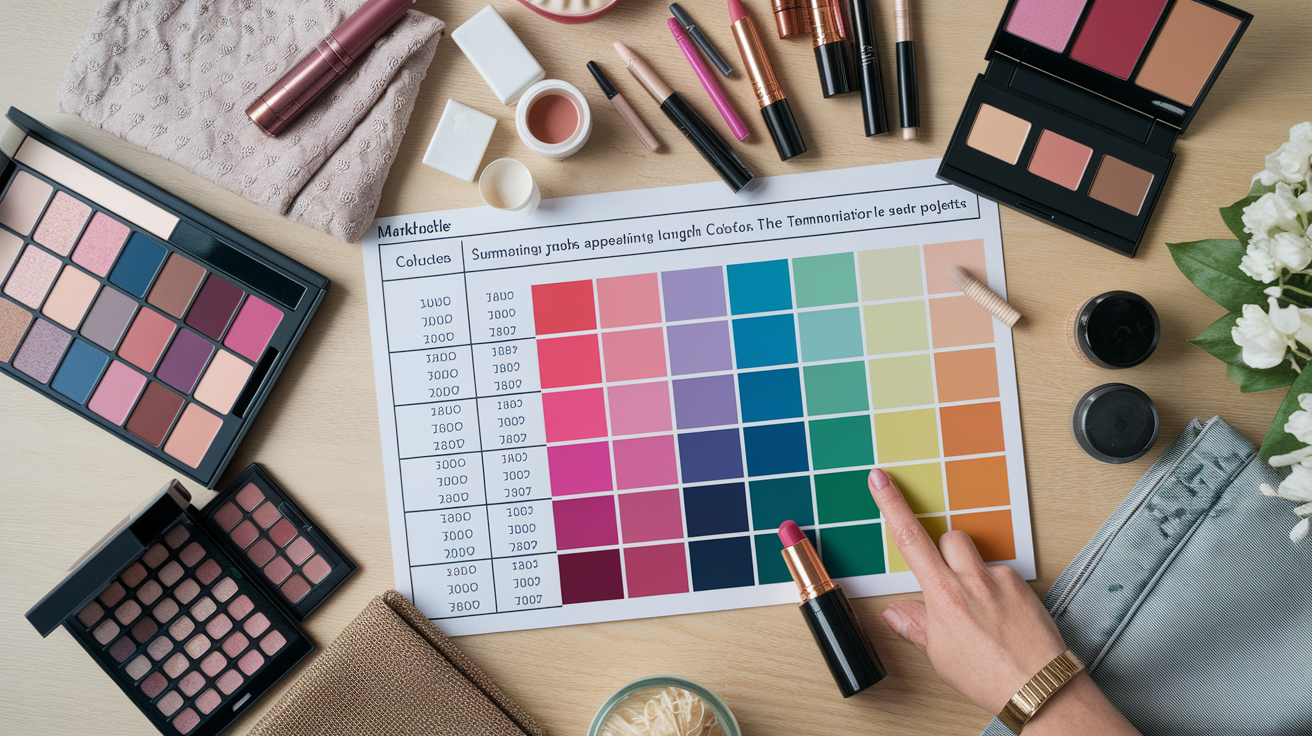
Let your hair color analysis inform routine decisions by utilizing a color analysis kit. Anchor outfits, makeup, and hair services to your custom palette, then tweak as your features or taste change. Discuss results with professionals and document in real-life illumination.
| Decision area | Do | Avoid | Why it matters |
|---|---|---|---|
| Wardrobe | Build around core neutrals from your palette | Random sale colors | Keeps harmony and contrast balanced |
| Makeup | Match brows/blush/lip to undertone and depth | Overly cool or warm extremes | Prevents clashing with hair |
| Hair color | Stay within 1–3 levels of natural; test first | Big jumps lighter in one session | Safer, steadier results |
| Accessories | Use accent shades near the face | Heavy metallics outside palette | Frames complexion well |
| Light check | Review color in daylight and indoor light | Judging in salon light only | Color shifts under different lighting |
Choosing your palette
1. Knowing your season type. Observe note depth (light to dark), temperature (warm, cool, neutral) and contrast (low, medium, high). A gentle fall might work for drab, warm browns; a clear winter skews cool, high-contrast espresso or blue-black.
2. E.g. Map core shades by season. Add in 2–3 base colors (such as medium golden brown for warm springs, ash brunette for cool summers). Include root-melt, glaze and lowlight choices that guard your contrast.
3. Accents and highlights. Select ribbons two shades lighter for low-medium contrast. For high contrast, keep highlights crisp and cool or warm as your type – but 3 tones lighter than natural is about as high as you want to go.
4. Construct a visual chart. Use swatch cards, printed photos, or a mini digital board. Record lighting details and salon recipes to duplicate successes.
Sort swatches by seasonal color analysis and depth so decisions are fast on hectic mornings. Add a patch test reminder (24–48 hours prior to service) and a strand test when experimenting with new colors.
Communicating with stylists
Share your write-up, palette and previous formulas. Bring photos and swatches – lighting changes everything, so take color shots in daylight and indoor light.
Discuss target level, target tone, undertone pigment at target, the level and tone you have, % grey. Mention preferred contrast and warmth. If you're going lighter, be extra cautious when you're on medium–high contrast, or you could wash out.
Request a test strand or temporary gloss before switching up completely. With a lot of goals, it takes more than one appointment — establish a plan and timeline.
Evolving your look
Experiment with fresh colors within your palette when seasons shift or you're traveling, but always test color in different light. Tweak your palette when skin tone changes, grey creeps in or lifestyle shifts.
Add trend notes: face-framing accents, soft copper glazes, or cool-sheer toners that match your type.
Trace compliments and how you feel on high-contrast days as opposed to soft days. Apply your results! Use color swatches to identify shades that pop and direct upkeep.
Conclusion
To conclude, hair color analysis reaps. You receive distinct indicators regarding shade, tone, and depth. You know how light, skin, and eye color factor in. You detect prejudice and lacunae. You choose a plan that suits real life, not fads.
A little anecdote. Cool skinned client continually picked warm chestnut. The hair seemed limp. Ash brown 5 with a soft lowlight (we tested) Her eyes popped. She grinned. Minor move, major momentum.
For next steps, save your notes. Test swatches in natural light. Monitor fade over 6 weeks. One change at a time, try Need assistance? Book a quick consult. OR send 2 photos in natural light and your goals. Coming to catch what your hair can perform. Let's begin.
Frequently Asked Questions
What is hair color analysis?
Hair colour analysis, particularly through a color analysis kit, identifies hues that flatter your skin tone, eye color, and natural hair color. It employs undertones (warm, cool, neutral), contrast, and depth to guide decisions, aiming for a harmonious effect that enhances your features.
How do I determine my undertone for hair color?
Inspect your skin in natural light and use a color analysis kit to determine your color type. Look at your veins: green hints warm, blue/purple hints cool, and mixed hints neutral. Gold jewelry flatters warm tones, while silver enhances cool. Utilize this information to select flattering colors for your hair color, ensuring they complement your skin tone.
What tools do professionals use for color analysis?
Professionals utilize shade charts, color wheels, and color analysis kits to assess natural hair color, undertone, and porosity. A patch test and strand test forecast results, ensuring color accuracy while reducing risks. This technique promotes healthy hair through precise color matching.
How does psychology influence hair color choices?
Color influences emotion, with darker tones conveying power and lighter tones appearing youthful and accessible. For a new look, consider using a color analysis kit to select shades that fit your lifestyle and highlight your best colors.
What are common limitations in hair color analysis?
Porosity, old dye, and uneven tones can skew results, making it essential to use a color analysis kit for accuracy. Lighting can fool you, while a color analysis camera can help reveal your true color type for better matching.
What is "advanced color analysis" for hair?
It's more than just undertones; it encompasses contrast levels, seasonal palettes, and eye patterning, along with 3D placement techniques like balayage and foilyage. The aim is to achieve dimension and movement while ensuring a low-maintenance grow out, utilizing a color analysis kit for personalized results.
How do I apply my results to choose a hair color?
In terms of matching your undertone and selecting the best colors for your personal palette, choose 1–2 levels in your natural hair color range for subtle shifts. Use strand tests to verify and opt for salon-quality products and protective treatments.